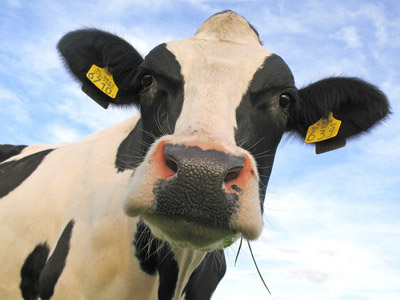Understanding Paratuberculosis: Fighting Disease with Mathematics

Johne's disease (JD) is a chronic intestinal infection affecting ruminants, and according to the U.S. dairy industry, causes an estimated annual loss of $200 million. In infected cattle, the prolonged and slow infection causes rapid weight loss and diarrhea, which in turn causes decreased milk production and premature culling of clinically infected animals.
As a postdoctoral fellow at the National Institute for Mathematical and Biological Synthesis, Gesham Magombedze conducts research into improving the understanding of the underlying biology of JD as well as providing insight into possible treatments that help to control and eradicate Mycobacterium avium subspecies paratuberculosis (MAP), the bacterial pathogen that causes JD.
One of the factors that makes JD difficult to detect in a herd is the fact that symptoms of infection might not be seen for 2 to 5 years after infection has taken place. Once infection has occurred, the infected animal is likely to shed bacteria, which in turn contaminate the areas where cattle live and subsequently infect other animals in the herd.
While JD affects ruminants, there is some cause for concern with public health. Some research has suggested a link between the causal organism of JD to Crohn's disease in humans.
At NIMBioS, Magombedze uses immunological and gene expression data to study the pathological mechanisms of the bacilli that cause JD. The ultimate goal will then be to combine gene expression data with a dynamical mathematical model that can be used to predict all possible MAP infection scenarios, which will aid in understanding the development and treatment of JD.
Magombedze, who has a PhD in applied mathematics from the National University of Science and Technology in Zimbabwe, said he became interested in mathematical biology when he learned that mathematical modeling can be applied to the study of infectious diseases as a tool to answer biological questions that are not clearly known from a biological viewpoint.
"The NIMBioS fellowship will help me to develop skills to critique, refine and develop modeling ideas and models that can address important biological questions," Magombedze said.
For more information about postdoctoral fellowships and other research and educational opportunities at NIMBioS, visit our website at http://www.nimbios.org.
#
The National Institute for Mathematical and Biological Synthesis (NIMBioS) brings together researchers from around the world to collaborate across disciplinary boundaries to investigate solutions to basic and applied problems in the life sciences. NIMBioS is supported by the National Science Foundation, the U.S. Department of Homeland Security, and the U.S. Department of Agriculture with additional support from The University of Tennessee, Knoxville.
NIMBioS
1122 Volunteer Blvd., Suite 106
University of Tennessee
Knoxville,
TN 37996-3410
PH: (865) 974-9334
FAX: (865) 974-9461
Contact NIMBioS


